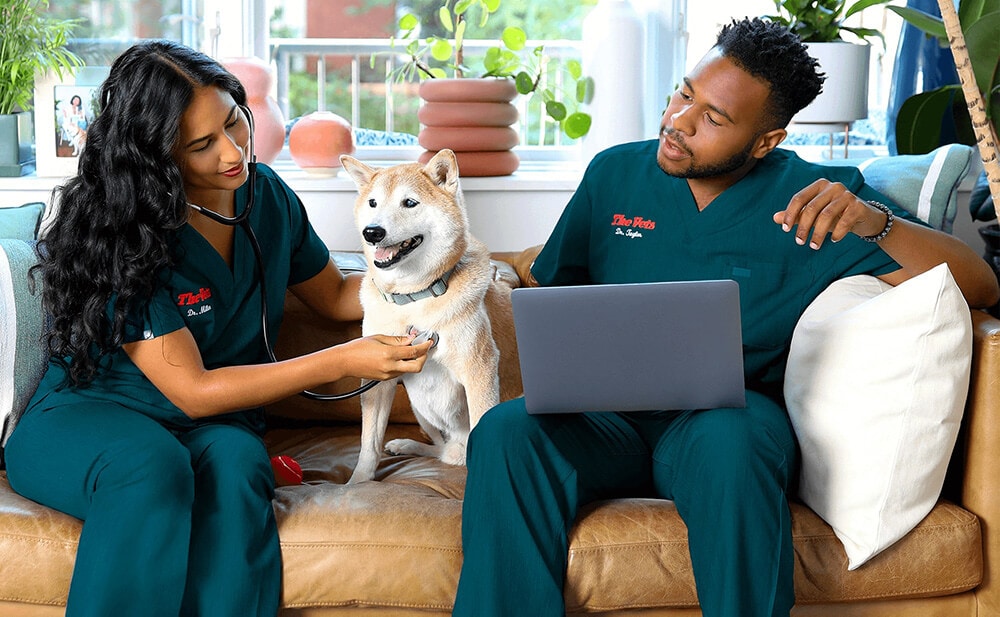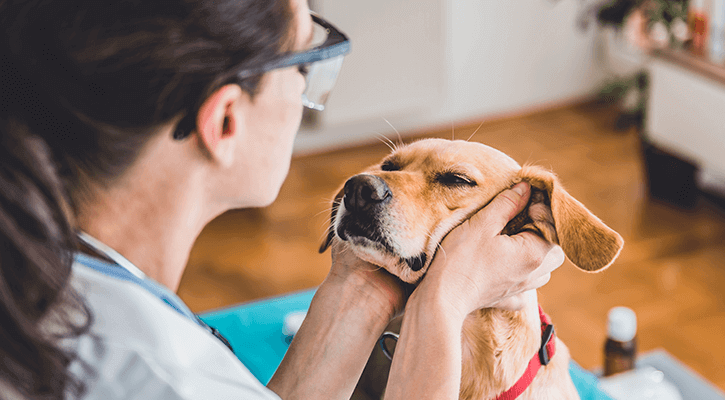When Your Pup Needs Help: What to Expect With tplo surgery for dogs
When Your Pup Needs Help: What to Expect With tplo surgery for dogs
Blog Article
All About Veterinarian Surgery: Understanding the Relevance of Professional Take Care Of Your Pet dogs
Vet surgery is an important component of family pet medical care. It includes numerous procedures, from regular elective surgical treatments to urgent interventions. Understanding the intricacies of these surgical procedures can aid pet dog proprietors make notified choices. The preparation, execution, and recovery phases are important for making sure the well-being of pets. With correct understanding, owners can browse the complexities of vet care. What elements should be taken into consideration before a family pet undergoes surgery?
Types of Vet Surgeries
When a pet needs surgical treatment, comprehending the various types of veterinarian surgeries can help family pet proprietors make educated choices. Veterinary surgeries can be broadly classified right into three major types: elective, immediate, and emergency surgical treatments. Elective surgeries, such as spaying or neutering, are prepared procedures that are not quickly deadly. Urgent surgeries, like those for foreign body removal, need to be executed quickly but are not life-threatening in the moment. Emergency situation surgeries, such as those addressing extreme injury or interior bleeding, are essential and need immediate attention.Additionally, surgical procedures can vary in intricacy, varying from minimally intrusive laparoscopic procedures to extra comprehensive open surgical procedures. Each kind of surgical treatment lugs its very own dangers and recuperation procedures. Recognizing these classifications enables animal owners to take part in meaningful conversations with vets, causing far better end results for their beloved pets.
Getting ready for Your Pet dog's Surgical procedure
Preparing for a pet dog's surgical procedure involves an extensive checklist to assure all fundamentals are covered. Reliable interaction with the veterinarian is essential for understanding the treatment and any required pre-operative actions - canine tplo surgery. Furthermore, having clear post-operative treatment directions will help proprietors provide the most effective assistance for their recuperating animals
Pre-Surgery List Essentials
Guaranteeing a smooth surgical experience for a pet dog calls for careful prep work and interest to information. A pre-surgery checklist is crucial for animal proprietors to follow. Initially, confirming the arranged surgical procedure day and time is essential. Owners need to additionally confirm that their family pet has actually not eaten according to the vet's guidelines, typically for 8-12 hours before surgical treatment. Gathering required medical documents, consisting of vaccination history, is very important for the veterinarian's testimonial. It is additionally advisable to prepare a comfortable space at home for the family pet's recovery after surgical treatment. Ultimately, owners ought to have a plan for transportation to and from the veterinary clinic, seeing to it that the pet is safe and secure and comfortable throughout the journey. Complying with these steps can considerably improve the medical experience.
Communicating With Your Vet

Efficient interaction with the vet is necessary for an effective surgical experience for pet dogs. Proprietors ought to be prepared to review their pet dog's clinical background, including any type of pre-existing conditions, medications, and allergic reactions. This information aids the vet analyze risks and tailor the surgical plan accordingly. Additionally, animal proprietors should ask concerns regarding the procedure, anesthetic, and anticipated outcomes to guarantee they totally comprehend the procedure. Clarifying any type of uncertainties can relieve anxiety for both the animal and the owner. It is likewise vital to communicate any behavioral adjustments or concerns observed in the pet leading up to the surgical treatment. Ultimately, clear dialogue promotes depend on and cooperation, guaranteeing that animals get the very best possible treatment throughout their surgical trip.
Post-Operative Care Directions
After reviewing the surgery with the vet, family pet proprietors ought to concentrate on post-operative treatment instructions to promote a smooth recovery for their pets. These directions generally consist of keeping track of the medical site for indicators of infection, such as redness or discharge. Animals might need to be kept one's cool and confined to avoid too much movement that can interfere with recovery. Discomfort monitoring is essential, so owners need to comply with the vet's advice on carrying out medicines. Furthermore, nutritional restrictions may be suggested to stay clear of intestinal distress. Regular follow-up visits are essential to guarantee appropriate recovery and attend to any kind of problems. By sticking to these post-operative care directions, animal proprietors can greatly contribute to their animal's healing and general wellness.
The Surgery Explained
The surgical procedure for animals includes vital steps that ensure their safety and healing. Pre-surgery prep work are crucial for minimizing threats, while post-operative treatment guidelines play a vital role in promoting healing. Recognizing these components aids pet owners navigate the surgical experience better.
Pre-Surgery Preparations
Prior to a pet dog undertakes surgery, numerous important preparations need to happen to assure a safe and effective treatment. First, an extensive vet examination is necessary to examine the pet's total wellness and identify any potential threats. This may include blood examinations, imaging, or other diagnostics. The vet will also go over anesthetic choices customized to the pet dog's details requirements. Additionally, pet dog owners are commonly instructed to withhold food and water for a defined time prior to surgical procedure to lessen the risk of problems during anesthetic. It is necessary for owners to supply a total case history, including any drugs or allergic reactions, making certain the surgical group has all required information. Proper communication and adherence to pre-surgery standards can significantly boost the end result of the procedure.
Post-Operative Care Guidelines
Appropriate post-operative treatment is vital for making sure a pet dog's recovery adhering to surgical treatment. After the treatment, animals should be monitored carefully for any kind of indications of problems, such as too much blood loss, swelling, or unusual habits. It is necessary to comply with the vet's directions relating to medications, including pain reducers and antibiotics. Pet dogs ought to be maintained in a peaceful, comfy environment to lower tension and promote recovery. Limiting task is important; short, leashed strolls may be required, but jumping or running must be stayed clear of. Routine follow-up consultations ought to be set up to analyze the healing procedure. Additionally, the medical site has to be kept clean and completely dry, with any kind of indicators of infection reported to a veterinarian without delay. Adhering to these guidelines enhances recovery end results.
Anesthesia and Pain Administration
Effective anesthesia and discomfort administration are necessary elements of veterinary surgical procedure, ensuring that family pets remain comfortable and safe throughout the treatment. Vets evaluate each pet dog's specific demands, taking into consideration factors such as age, weight, wellness condition, and the kind of surgical procedure being performed.Anesthesia methods generally consist of a mix of pre-anesthetic medications, induction agents, and inhalant anesthetics, allowing for precise control over the animal's degree of consciousness. Monitoring throughout surgical procedure is crucial; vets continually observe important signs to attend to any kind of potential complications promptly.Pain monitoring strategies might include opioids, non-steroidal anti-inflammatory drugs (NSAIDs), and neighborhood anesthetics, customized to the family pet's specific circumstance. This diverse technique assists reduce discomfort and advertises a smoother medical experience. By focusing on efficient anesthetic and discomfort monitoring, vet specialists boost the total well-being of family pets undergoing operations, ensuring they obtain the click here greatest standard of treatment.
Post-Operative Care and Recuperation
Following surgery, the focus moves to post-operative treatment and recovery, which is necessary for guaranteeing a family pet's risk-free return to normal activities. During this duration, family pets need a silent, comfy setting to help healing. Owners ought to carefully check their family pets for any indications of discomfort or uncommon behavior.Veterinary standards typically consist of certain instructions related to medication administration, wound care, and dietary modifications. It is important to stick to these referrals to minimize issues and advertise recovery. Animals might need to be limited from energetic tasks, such as running or leaping, during their healing period (veterinary cardiologist near me).Regular follow-up appointments with the vet enable for monitoring of the pet's progress and prompt modifications to the treatment strategy. Offering emotional assistance and companionship can likewise boost a pet's recuperation experience, assisting to minimize anxiety and anxiety. Overall, attentive post-operative treatment plays a substantial function in achieving an effective healing
Recognizing Difficulties After Surgical Treatment
Just how can pet proprietors recognize problems after surgical treatment? Awareness of specific indicators is crucial for making sure the well-being of animals throughout recovery. Typical indicators consist of extreme swelling, redness, or discharge at the medical site, which might signify infection. Furthermore, relentless pain, suggested by yawping or hesitation to move, need to trigger instant interest. Changes in appetite or water intake can also indicate complications; a reduction in these behaviors may signify pain or distress.Moreover, animal proprietors must check their pets for any uncommon actions, such as sleepiness or trouble breathing, as these can be indicators of severe issues. Throwing up or looseness of the bowels following surgical treatment might require urgent veterinary assessment. Acknowledging these problems early can greatly influence a family pet's recuperation process, stressing the value of vigilance and prompt interaction with a veterinarian for any type of concerning signs.
The Function of Veterinary Specialists in Surgical Care
Vet professionals play a necessary function in making sure the safety and security and success of surgeries for family pets, especially adhering to surgical treatment when checking and treatment are extremely important. These experts include veterinarians, vet service technicians, and support staff, every one of whom add specialized skills to the surgical process.Before surgery, vets carry out extensive analyses to analyze the animal's wellness, making certain that any type of hidden conditions are handled. During the procedure, the surgical team supplies anesthetic, maintains sterile environments, and monitors essential signs, all crucial for lessening risks.Post-operative treatment is similarly substantial; veterinary specialists observe for issues, manage discomfort, and overview proprietors on healing practices. Their experience allows them to acknowledge early indications of distress or infection, making certain prompt treatment. Inevitably, the collective initiatives of vet experts in surgical care promote a secure environment, advertising the well-being of pets throughout the surgical journey.

Often Asked Questions
How Do I Pick the Right Veterinary Specialist for My Pet?
Choosing the appropriate vet cosmetic surgeon includes researching credentials, reading testimonials, and examining the center's environment. It is necessary to assess the specialist's experience with particular treatments and their interaction design when choosing.
What Are Typical Misconceptions About Vet Surgeries?
Typical misconceptions about vet surgical procedures include beliefs that they are constantly high-risk, unneeded, or for emergency situations. Many family pet proprietors undervalue the advantages of preventative treatments and the ability associated with veterinary surgical treatment.
Just How Much Will My Pet dog's Surgical procedure Expense?
The cost of a family pet's surgery can differ significantly based on variables such as the sort of procedure, the vet's experience, and geographic area (emergency vet bellingham). Commonly, expenditures range from a couple of hundred to a number of thousand dollars

Can My Family Pet Consume Before Surgical Treatment?
Before surgery, it is normally suggested that family pets abstain from eating for a particular duration. This fasting aids reduce the threat of complications during anesthetic. Owners need to consult their vet for exact guidelines customized to their pet's demands.
What if My Family Pet Has Pre-Existing Health And Wellness Issues?
When an animal has pre-existing wellness problems, it's vital for the veterinarian to evaluate these aspects before surgical treatment. This assessment warranties appropriate preventative measures are taken, decreasing risks and optimizing the pet dog's overall safety and security throughout the treatment.
Report this page